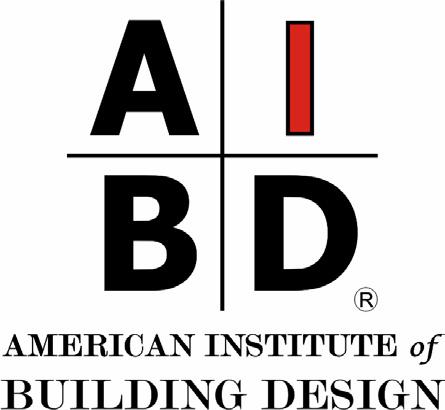AIBDmagazine
The official publication of the American Institute of Building Design







HappyNew Year!
Welcome to our Winter 2023 issue!
I am excited to work on this issue for the upcoming 2023 IBS in Las Vegas! I would like to give my warmest regards to our friends at NAHB. Visit our AIBD booth at IBS and you will find a printed copy of this issue.
In this issue, we will be showcasing projects from our AIBD member. We will also be hearing our executive director, Steve Mickley, to talk about how our organization successfully incorporated “the Great Game of Business” model into our dayto-day operation and committees. Last but not the least, our immediate past president will share his experiences with the latest AIBD conference experience.
I wish you all a happy new y ear! Thank you and enjoy!
www.AIBD.org/magazine
is the founding principal of YNL Architects, Inc. He is currently the Editor-In-Chief of AIBD magazine and the National External Vice President of AIBD.

It is hard to believe that 2022 is coming to a close. If your year was anything like mine, it was full of adventure and new learnings. As we transition into the holiday season, it is important for all of us to reflect on what truly matters. This Christmas season, I am thankful first and foremost for the message of Hope that this holiday brings to us. I am blessed with an amazing wife and 2 wonderful children that encourage me to grow and be intentional every day.
I am also thankful for our collective AIBD family. So many of you are dear friends and mentors to me. You constantly inspire me with your creativity, wisdom and passion. I pray that all of us will take time at the end of this year to reflect on what we have accomplished and look forward to how we can continue to create where people live in the future.
Merry Christmas and Happy New Year to all of you!
Be blessed my friends,
Ben Taboltis a 2008 graduate of Syracuse University. He has in-depth experience in both commercial and residential design. He has worked with numerous companies in several positions including Project Architect, Construction Manager, BIM Manager and Director of Project Services. Ben is currently working with MiTek’s services team supporting thousands of design support staff serving design customers all over the world. His passion is to support companies in using the latest technologies available to create the best possible project solutions. Benjamin is the Global Product Portfolio Manager of services at MiTek.

An AIBD Consulting Colleagues appointment is a peer coaching opportunity. It is a confidential process through which a member of the institute's College of Fellows works with you to answer questions about current practices. To help you expand, refine, and build new skills and to discuss new ideas. Or get help solving a problem, with a project or within your company.
Speed up your learning by getting quick, accurate feedback and advice. Talk with someone who provides the same services and performs the same job functions as you. Because of this unique perspective, build camaraderie, boost your productivity, advance your leadership skills, and develop a sustainable change in your career.



Peer coaching is as individual and unique as the people who engage in it. Below are the professionals volunteering their time to help build a better residential design profession, one designer at a time. Not only will you receive encouragement and helpful advice, but it comes from a relevant perspective. Their information is straightforward and candid.
The AIBD College of Fellows is seasoned industry professionals who have notably contributed to the advancement of the building design profession either by excellence in design, education, literature, or public service. Each Fellow is a certified member of the American Institute of Building Design, and those below have set aside time to collaborate with you.
Each building designer has their strengths, knowledge, and experiences. Review the profiles and schedule a session with one, or more, professionals with attributes aligning with your needs and questions.

2022 - 2023
is a graduate of Syracuse University. He has in-depth experience in both commercial and residential design. He has worked with numerous companies in a number of positions including Project Architect, Project Manager, Construction Manager, BIM Manager and President. Ben has successfully customized Revit Software for multiple companies and has completed many design projects using BIM technology. His passion is to support individuals and companies in using the latest technologies available to create the best possible project solutions. Ben has served AIBD in the past as chapter chair of the central Colorado chapter, chair of the BIM-R committee, and on the board of directors. Benjamin is the Director of Plan Services for MiTek.
is the owner of Hake Custom Design LLC in the Canton, Ohio Area with more than 20 years in business. His work received numerous awards over the years and he is currently serving as a national Director of AIBD and on the local BIA board of directors.
Ted is a professional AIBD member and a Certified Professional Building Designer, as well as Certified Green Professional of the NAHB.
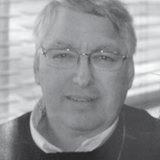

is the founding principal of YNL Architects, Inc. His work received numerous design awards and was published at various media such as ArchDaily, Hinge Magazine, CONDE, CommArch Magazine, and Hospitality-Interiors Magazine. YuNgok is a recipient of the BD+C 40 Under 40, ENR California 20 Under 40, AIBD Designer of the Year, and a Fellow of the American Institute of Architects

is currently the Director of Human Resources, Fin Pan, Inc./ TClear Corp. Her extensive education includes a BS in Art from Miami University – Art & Education double major, Minor in Geology and German, and an MA in Administration from Xavier University. She holds an Ohio Bookkeeping Certificate, as well as two building Material Patents and six building product developments. Lisa has eleven years experience in Education as an Art and Music Teacher and as a principal, as well as thirty one years in manufacturing, holding positions in Production, Quality Control, Product Development, Marketing, Administration and HR.
Walker Treasurer
has over 40 years of experience in Building Design, Construction, and Civil Engineering. He is a Certified Professional Building Designer with the National Council of Building Designer Certification and a Licensed Professional Engineer in the State of Texas (PE), The State of New Mexico (PE), and a Certified Project Management Professional (PMP). Mr. Walker attended Texas A&M University – Commerce where is holds a Bachelor and Master of Science degrees. After his graduation Mr. Walker gave back by teaching at the university as an Adjunct Professor and Instructor in the Engineering Department teaching engineering and architectural 2d and 3d drafting courses.

2022 - 2023 DIRECTORS
was born and raised in Massillon Ohio. In 1987, he was selected from 1500 students to take part in a pilot architectural program, at the time only one of three high schools nationwide to have a full-time CAD program. After college, he was asked to join the faculty at Columbus State Community College at the age of 22. Over his career, he has served as a design consultant to companies such as Target, Best Buy, the State of North Dakota, the State of Minnesota, and other public organizations. Outside of residential design, he is an ordained pastor, a former public policy lobbyist, a school teacher, and a legislative candidate.


is a Certified Residential Designer and a Fellow of AIBD. She has been designing custom homes and remodeling existing homes for over 25 years. Karen is a partner in a Design / Build firm in Anchorage, Alaska. She has been a liaison to the National Association of Home Builders for AIBD for over 10 years. Karen was AIBD’s 2014 Designer of the Year and President of AIBD.
is the owner of Nelson Design Group, LLC, a nationally published and award-winning home design firm. He has over 30 years of experience in home design. His work was published by Architectural Designs, Harris Publications, Homestyles Publishing, Home Design Alternatives, Builder Magazine, Home Planners, Garlinghouse, Old House Jornal, House Beautiful, Good Housekeeping, Better Homes & Gardens and many more. Michael is a Certified Professional Building Designer and a Director of AIBD.

From early childhood, Michael was interested in building. First with “Lincoln Logs” then moved up to forts and rafts. In high school he found the drafting class fascinating and determined to become a structural engineer. Those plans were laid aside when a calling to the Gospel ministry caused redirection. During the 30 years he spent in the ministry, he was involved in several building projects, both on the annual church convention sites and alongside his friends as they worked on their own additions. In 2006, Michael attended Arapahoe Community College to receive an Architecture Technology degrees, and has several CAD and Drafting certificates. He has worked in the industry since, obtaining his LEED-AP from Green Business Certification and has maintained these credentials.
is the President and primary designer at Edge Engineering, Inc. an engineering firm located in Seymour, Tennessee. She specializes in the design of custom homes nationally and internationally. Jacquilla also provides custom designs for commercial clients. She obtained her BS in ITM (i.e. Industrial engineering) from Berea College. She joined her husband’s engineering practice and brought residential & commercial design in as a new division. She later became President of the company after 5 years. Jacquilla is a member of National Association Of Women in Construction. She is a 2022 ARDA winner and a member of the AIBD. Jacquilla as held the positions of examiner, councilman, NCBDC Vice Present and is currently the NCBDC President.

served AIBD on the national level in many capacities eventually serving two terms as National President. As a design professional certified by the National Council of Building Designer Certification, he has always supported and promoted the efforts of NCBDC.
His involvement in helping to establish a relationship between AIBD Florida and the Institute of Classical Architecture and Classical American in New York lead to his own completion of a year and a half long course study in the principles of classical architecture specifically designed and taught by the ICACA in Florida, and the southeastern states.

Lyle was inducted into the AIBD College of Fellows in 2015.


has been in the residential building industry for 35 years and has owned and operated BBKern DESIGNS, LLC, Colorado Springs, CO, for 25 years. BBKern DESIGNS is winner of multiple ARDA submittals. Having become an AIBD member in 2002, Bernie is serving consecutive years as President of the AIBD and has served on the AIBD Board since 2014. Bernie was honored and humbled with the 2018 AIBD Designer of the Year. Bernie is also past President and Chair of the Central Colorado Chapter. Bernie helped launch AIBD’s first chapter, Central Colorado.
Steve Mickley Executive Director
is the Executive Director of AIBD and a Certified Professional Building Designer. Prior to his current position, Steve most recently was the Managing Director of SGA Architecture in Palm Beach, FL, and spent 10 years as owner of a residential design firm. Steve holds numerous awards, such as AIBD’s President’s Award and AIBD Designer of the Year, and is a member of the AIBD College of Fellows. Steve’s many interests include competitive BBQ, racing in triathlons, and skydiving where he broke a world record by successfully completing 52 skydives from an airplane within 11 hours and 15 minutes, each time packing his own parachute.
is the Communications Director for AIBD. Garrett handles, among other things, the oversight of all AIBD digital media and electronic communications, AIBD’s social media platforms and the AIBD websites.


2022 was another highly productive year for AIBD and the AIBD A-Team staff. A new Board was inducted that included a new AIBD President, Benjamin Tabolt. In addition to a new Board, a new Conference Committee was established led by new Committee Chair, AIBD First Vice President, Ted Hake.

The AIBD Conference Committee meets every other week and works diligently to establish the plans and goals to create four educational and fun filled architectural based conferences. Two of those conferences are scheduled as a Hybrid event, providing in person classes and events along with two virtual only classes.
Last summer, AIBD visited St. Paul, Minnesota meeting at the St. Paul Hotel in downtown of the twin city district. The event was filled up with high profile speakers with Sam Rashin, architect and author of the books, Retooling the U.S. Housing Industry and recently published, Housing 2.0: A Disruption Survival Guide. Also speaking was Mike Lin of BeLoose Graphic Workshop, Elliott Eisenber PHD “the bowtie economist” and Angie Schultz of StoryBrand Certified Guide. There were other presenters and all did a fantastic job presenting to AIBD members.
Following the Annual Board and Council meetings the event kicked off with the traditional Compass Club event, a club recognizing member recruitment. The Compass Club attendees met at the Wabasha Street Caves, a restored known historical gangster hideout.
Wanted: If you have seen this couple (right), please report to info@aibd.org

On the first day of the education classes the AIBD annual membership meeting took place where our new AIBD Board was announced to members. AIBD welcomed new President Benjamin Tabolt, First Vice President Ted Hake, Second Vice President Yu-Ngok Lo, Secretary Lisa Schafer, Treasurer Larry Walker, Director Michael Payne, Director
Mike Nelson, NCBDC President Jacquilla Gillette, Chancellor of the College of Fellows, Lyle Breeze, and Past President, Bernie Kern.
The Summer Conference ended with a glamorous GALA event, the American Residential Design Awards banquet that featured the global choice award going to AIS Designs CO. followed by the AIBD Designer of the year, awarded to President Benjamin Tabolt for his outstanding performances on behalf of AIBD and our residential design industry.
The Conference Committee did a great job transitioning into the new Board and did not miss a step establishing a fall virtual conference, AIBD Design and Build Conference which themed on new technology.
The new Conference Committee has completed contracts as we look forward to two in person conferences on March 3-4 at the Ocean Drive Beach & Golf Resort, North Myrtle Beach, SC. And this summer, August 3-5 at the Loews Vanderbilt
Hotel, Nashville, TN. We hope to see you there as we continue with our outstanding education opportunities that help each AIBD designer become better, and an opportunity to meet your colleague’s friends and their families. See you at the Music City of USA.
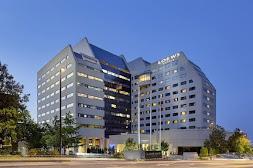
AIBD is very thankful towards the efforts of the Conference Committee. Much thanks to Chair Ted Hake, Benjamin Tabolt and Michael Payne.
And also, our success as an Institute is not without the hard work and dedication from Executive Director Steven Mickley, Communication Director Garrett Mickley and Certification Director Rusty Hudnet.
has been in the residential building industry for 35 years and has owned and operated BBKern DESIGNS, LLC, Colorado Springs, CO, for 25 years. BBKern DESIGNS is winner of multiple ARDA submittals. Having become an AIBD member in 2002, Bernie served as the President of the AIBD from 2020 to 2022 and has served on the AIBD Board since 2014. Bernie was honored and humbled with the 2018 AIBD Designer of the Year. Bernie is also past President and Chair of the Central Colorado Chapter. Bernie helped launch AIBD’s first chapter, Central Colorado.


The HOUSEofCARDS is a design/build project by the University of Louisiana at Lafayette Building Institute in Arnaudville, Louisiana. The project is conceived as a folly on a rural piece of land and serves as an artist’s retreat for a non-profit community organization.
Twenty-nine third-year and graduate architecture students of the University designed and built the HOUSEofCARDS over two semesters.
The concept is that of a 16’x16’ self-sufficient Thoreau’s Cabin on a Cajun Walden Pond, with concrete being the primary material for its longevity and durability. In this way and at this small scale, concrete is a sustainable material because it will not require maintenance and will last indefinitely.
The concrete was mixed in small batches on the site and poured using 12-inch lifts. The 10-inch thick walls are insulated in the middle with 2 inches of polyisocyanurate foam insulation, providing a vapor barrier and thermal break. The walls are dyed the color of the earth to blend into the site and are contextually textured with the salvaged board formwork from a dismantled barn on site. They lean at 8 degrees against each other on the corners like a house of cards achieving forced perspectives and scale shifts.
Paradoxically, even though the structure is heavy and monolithic, the expansive windows and clerestories imbue the space with lightness as if it had been built with a giant’s hands from a deck of cards.
The polished concrete floors and salvaged pine butcher block countertops and desks provide a relaxing space for artists and scholars to produce their work.
The building has water from a well, electricity from a planned solar array, a mini-split heat pump, and a compost toilet, providing self-sufficiency.
In addition to hands-on experience in material properties and processes, the students gained expertise in client and consultant relations, subcontractor coordination, budgeting, and scheduling. Within this small rural outpost, solitude and community unite.
Project sponsored by Absolute Concrete Polishing, ADG Engineering, Air Plus, Alchemco, American Institute of Architects - South Louisiana Chapter, Armentor Glass, Associated General Contractors - Construction Educational Trust Fund, Atchafalaya National Heritage Area, Billeaud Companies, Construction Specifications Institute - Acadiana Chapter,Dave’sScreenandWindow,DelahoussayeCompany, Distribution International, Doug Ashy Building Materials, Enterprise Data Concepts, Event Solutions, Grace Hebert Curtis Architects, Gulf Coast Air Systems, Holly and Smith Architects, Iberia Rental, JB Mouton Builders, Lambright Construction, Mapei, Metal Head Architectural Metalwork, Oge’s Rent-All Center, Peppers Unlimited, Ramier Architects, Randall J. Hebert & Associates, The Gen Group Construction, and White Cap.
is a Professor of Architecture at the University of Louisiana at Lafayette and the Holly and Smith Lafayette Studio Director. Gjertson attended Arizona State University (undergrade) and Rice University (graduate). He has been in practice for over 30 years and a professor for over twenty years. He is the director of the Building Institute, a “hands-on” design/build program which serves the community by building market-rate, sustainably designed homes as well as other community projects.



At some point, every business owner must answer the question: What is my exit plan?
In late 2012, an employee came up to AIBD Fellow Mike Keesee and asked, “So, boss, what happens to the company when you are gone?”
He likes his work. However, Mike stopped and thought – what will happen to the business? He had never really thought about the question and had no plans for retirement.
Later, at a conference, Mike was asked, “Are you in business because you needed a job, or are you building a business to sell?”
A few months later, Mike attended an AIBD convention when a peer asked if he had heard of the phrase “Open Book Management?” He hadn’t and quickly purchased two copies of the book The Great Game of Business and read it. The other copy was for his partner, Carl.
After going back through the book several times, they realized that this operating system solved several issues they had encountered while running their business.
We have little to sell except time in the architectural and engineering fields. While we produce a product, it’s not like a widget you can pull off the shelf, then package and ship.
Our problems stem from efficiency issues, project scope creeps, and managing budgets. So, how do we get employees to care about these things?
Mike and Carl started by teaching their team about financial literacy, the company’s critical number, setting up scoreboards, mini-games, High Involvement Planning, and gaining buy-in.
They then hired a Great Game of Business certified coach, which was “mind-blowing.” Especially when the coach mentioned a crazy notion – “excess profits.”
The company set up a pool and dedicated part of its profits to be distributed among employees to supplement existing benefits. A percentage of the employee’s total salary is set as a cap with the result that their dividend is a percentage of their salary. Once the pool is shared, the balance of the remaining profit returns to the owner.
In 2013, before calculating excess profits, Mike and Carl paid out roughly $25k in bonuses the old-fashioned way –seniority, personal performance, and those who are “team players.”
After switching to a structured profit-sharing program in 2014, they paid employees an additional $350,000. In 2016, they gave employees a paid week off between Christmas and New Year’s, in addition to booking a company cruise in March, which included every employee and their significant other!
Since playing The Game, sales have increased by 2x, and Mike and Carl’s profit margin has increased by 4x. What a difference!
Steve Mickley, another AIBD Fellow, is a Certified Great Game of Business Coach and works internally with AIBD member companies to implement The Game with their teams.

Schedule your first half-hour coaching session with Steve at AIBD.org/meetsteve (paid for with your AIBD Professional Membership).
Read more about Mike and Carl’s story of success and how their firm, Total Solutions Group, at AIBD.org/open-bookmanagement. Plus, how TSG became a 100% employeeowned company in 2022.
The Great Game of Business is a coaching organization and growth system that elevates businesses AND people to their fullest potential. Steve wants to help you simplify your business so everyone in your organization is aligned, understands the business, and can positively influence the company daily. GreatGame.com/Steve-Mickley.
is the Executive Director of AIBD and a Certified Professional Building Designer. He is also a Great Game of Business Certified Coach.
After three months of labor, we finally finished the Cisterna Cottage. So-called because it sits atop a 300-cubic meter potable water tank that will eventually quench seven homes on a point overlooking the Pacific Ocean.

Our little weekend getaway, perched upon the water tank, overlooks construction on a small development we’re building near Ayangue, a picturesque fishing village on Ecuador’s central coast. Right now, it’s just a lonely and quiet place to contemplate the sunset over whitecaps, but it will soon serve as an executive job shack for yours truly. After we finish a model home, the lovingly built cottage becomes a VRBO rental.
Because it’s the first building on site, and on weekends looky-loos come calling, the cottage had to set the bar for
the rest of our project. Our development concept builds on blending the allure of aboriginal architecture with modern comforts. Thatched roofs, gnarly orange wood posts, webbed muyuyo railings, and tropical hardwood finishes with cold and hot running water, flush toilets, and even airconditioning (although you don’t need it).
To keep it real, we used local craft almost exclusively. Only two things in the cottage came from abroad, the ceiling fan, which I bought at Home Depot in Miami, and the first 50, A-35 framing clips. (Our carpenter had the remaining hundred or so wood connectors made by a local blacksmith, see Framing the Cisterna Cottage.)
Much of the material we installed was harvested locally by the same folks that did the work. For me, this was the most
exciting part of the job, going deep into the rainforest on horseback, amidst towering bamboo groves, dense, tropical greenery, and the haunting cry of howler monkeys, to watch our machete-wielding workers cut the palm thatch that became our roofing, the brambles that became our railings, and the logs that became our posts. We chose the tree that became our kitchen countertop.
Our plumbing fixtures and appliances, while not of neighborhood manufacture, were made in Ecuador. The furnishings, chairs, bed, tables, and even our light fixtures were of local manufacture.
In future posts, I’ll take you to see how they harvest some of the building materials we used and how the word manufactured applies literally in this context, “manu” in manufactured means made by hand. Every board and nail in our little house has a local, human connection to the land and deeper meaning.
When we built our beach house in the fishing village of Ayangue, we wanted to source every product possible from the local area and use local artisans to install it. Local sourcing was easier than I thought it would be. We had no other choice.

Among the many items locally sourced was lighting, made in the town of Libertador Bolivar, about ten minutes north of our cottage. Like so many villages in Ecuador, this one has a craft theme; in this case, it’s making lamps using strands of toquilla as shade.
We chose Anabel Floreano’s little shop, “Jelixa,” because Anabel made the lamps herself. At the same time, other street vendors sell lamps made by local craftsmen, the most famous of which is Anabel’s husband, Santo Reyes. Besides avoiding the middleman, we found Anabel and her children charming. We ordered the lamps we needed and paid for them in advance. We returned two weeks later to find her finishing our order, nimble fingers working palm fibers into the bamboo frame.
Paja Toquilla: From
In the USA, folks talk about living locally and buying locally-produced products. It’s difficult here because exports come cheap and local stuff can be more difficult to find than foreign-made. Not so in Ecuador, where high tariffs on imports and poverty conspire to create thriving local industries exploiting local products, such as the toquilla cane, a palm-like tree native to South America’s warmer climates, from which comes to a tough fiber used for hats, lamps, and roofing.
Anabel’s shaggy straw lamps have become one of the most striking features of our house. They sway gently in the breeze and provide a soft, warm light.
Of all things of straw, I was most curious about traditional roof thatch. Along the coastal area, there are two types: an actual palm straw called cade, made from the leaves of the tagua (Phytelephas) palm, or the so-called “elephant palm”
because its seeds are hard like ivory. This cade or palmleaf straw material has a rustic, jungle-hut look, most often used because it’s cheap, although it lasts about five years before requiring replacement.

For our roof, we wanted the finer toquilla fibers (Carludovica palmata), from which they make Panama hats. I used to think toquilla fibers were just thin strands peeled off the same palm leaves as cade, but it turns out that toquilla fibers don’t come from leaves at all, and the plant they come from is not even a palm. It looks like one, but the toquilla plant has no trunk. It’s just leaves, sometimes three meters in length, that grow one from the other into something that looks like a fan. But it’s the stamen they use for the thatch and hats.
I wanted to see the whole process, so my contractor, Javier González, arranged for a visit to the pueblo of Dos Mangas, where I would meet a family that makes and installs toquilla roofing. It was a long ride along a dirt road to get to the family compound, where toquilla was drying on lines like clean laundry.
We paid Jose Suarez to take us into the forest and see from whence the toquilla comes. We saw the toquilla plants and learned about how the community stewards the forest, culling sustainably to keep the local crafts supplied with the raw materials of toquilla, cade, and graduate cane (bamboo) without depleting the forest. Mules carry the toquilla tubers down the mountain and into town; they require no human chaperone. They know the way.
The thin yet durable toquilla fibers that resist moisture and don’t break in high winds come from the fruit of this palmlike leafy plant. The fruit is a tuber, like a long, thin banana that grows from the center of a leafy spray. It’s called a cogullo.
The misconception that the toquilla comes from leaves is so common that locals poke fun at foreigners by plucking a large leaf off the plant to show its only practical application, making funny hats for foreigners.
As we ride through the rain forests near Manabi, Jose shows me different trees and what they’re good for, some for furniture, others for construction, and he invites me to smell the perfumed scent of trees. After so many years working with wood, I am only now appreciating where it all starts, in the forest.
It takes 12 of these cogullos to make one Panama Hat. The finest of these tubers go to hatmakers at a pretty price, but the seconds are used to make the durable and beautiful roofing material we came for.
Back at the family compound, we watched the process of making toquilla roofing. The first step in manufacturing, boil the tubers to soften the fibers. Then peal off the fibers – like string cheese – to fumigate the strands with sulfur, which explained the smell of the place. The sulfur smoke makes the fibers resistant to tropical pests. Next, they dry until dry enough for quick fingers to weave the fibers into toquilla shingles that provide shade and shelter from the tropical rain. In other words, a roof.
Back at the beach house, the same family that harvests the toquilla and makes it into shingles would install it on our roof. The method is simple, layer upon layer, tied with toquilla string onto battens. Ecuadorians are highly tolerant of the occasional roof leak, considering it a minor inconvenience, if one at all. We’re not, so under the toquilla, you will see a standard, cheap, corrugated roofing called Eternit, made of cement fibers and asbestos – yes, also a local material.
This roof will last – they tell me – for about ten years before it requires replacement. Permanent roofs are also available in Ecuador, from zinc to clay tile, but none are as beautiful and fitting for a beach house as traditional tequilas.
Besides, it matches our lamps.
In equatorial warmth, folks, you don’t need a big house by the beach. We live outside. When walking any coastal town in warmer climates, you’ll see entire families on hammocks, sitting on sidewalk curbs and buckets, and balancing on rickety chairs with the television mounted on an exterior wall and fútbol game blaring. In constructing our little beach bungalow, the Cisterna Cottage, we plan to spend most of our time between the balcony and the beach.
While my roofers worked and I looked on taking pictures, we talked about another local artisanship, the craft of building furniture, tools, and balustrades from the sturdy branches of the muyuyo shrub (Cordia lutea). It grows all over our property and would cover it if we didn’t continuously chop it down. When you live in the jungle, it’s constantly encroaching.
It turns out that the roofer’s son has his trade, and it’s building with muyuyo. I was happy when he offered to make our balcony railings – this would be the final touch of local craft. We harvested the muyuyo utilized on our land. I learned that the berries of this plant have a highly adhesive characteristic used as glue in traditional crafts. With stronger commercial adhesives available, the only modern application of the muyuyo berries is as natural (and free) hair gel.
I asked how long the harvested bramble would have to dry before we used it to build a balustrade but found curing had little meaning in a tropical setting where the humidity remained constant. One advantage of using local materials, they do not need to acclimatize.
So, with green, freshly cut bramble, the “moyuyeros,” or moyuyo carpenters, began piecing together our railings in much the way stone masons choose natural stones to fit into a wall, selecting the branch with the best fit. They used finish nails and wood glue to secure the boughs into an intricate and artistically sensitive web.
Our moyuyu railings turned out beautifully, and in the months that passed, I confirmed no shrinkage and a robust construction due to the wedging of the various branches. They decorated our cottage’s central post with liana, the swinging jungle vine of Tarzan fame, as a gift. All in all, these balusters and the vine remain my favorite element so our house.
In most places, some local stone exists, and the province of Santa Elena, where our beach home awaits, was no exception. Throughout the province, you will find many walls of a tawny rock often called “coral stone.” It’s not; it’s sandstone, compressed for millions of years under the seabed. In some places, inland quarries exist, such as in the provincial capital city of Santa Elena. The comuna, or indigenous community coop, has a 50-year claim on the quarry to cut and sell the stone.
We bought all our stone there to make walls, the cottage foundation, and even to line the septic tank.
The operation is low-tech and somewhat brutal. Hugo Lopez Orrala chops chunks of rock off his sandstone claim using a wedge, sledgehammer, and muscle. Then his workers cut the stone into blocks of the size and shape required using circular saws with carbide blades. I described to Hugo the gas-powered, diamond-tipped concrete chainsaws available in the United States, and his eyes opened wide with tool lust. I would buy one and bring it to him. However, this tool puts Hugo at a decisive and unfair competitive advantage over fellow comuneros.
is a builder of affordable housing and developer of small communities. He is the author of Building an Affordable House and Affordable Remodel, published by The Taunton Press, and coauthor of Architectural Design for Traditional Neighborhoods with Korkut Onaran.

Welcome to a luxurious architectural approach and lifestyle home that features a plan of over 5,000 square feet of living space with an open concept, expert lighting, and magnificent curb appeal. A beautiful and open oversized kitchen to a distinctive pop-up ceiling that adorns the generous family room with a crafter fireplace. It’s primary suite showcases a luxurious bath with an oversized walkin closet. This home also features a media, game room,
soundproof glass study room, utility room with a dog shower, and four additional bedrooms that round out this exquisite house plan. The roof pitches of 14 on 12 finishes off a charming and exceptional lifestyle to come together!

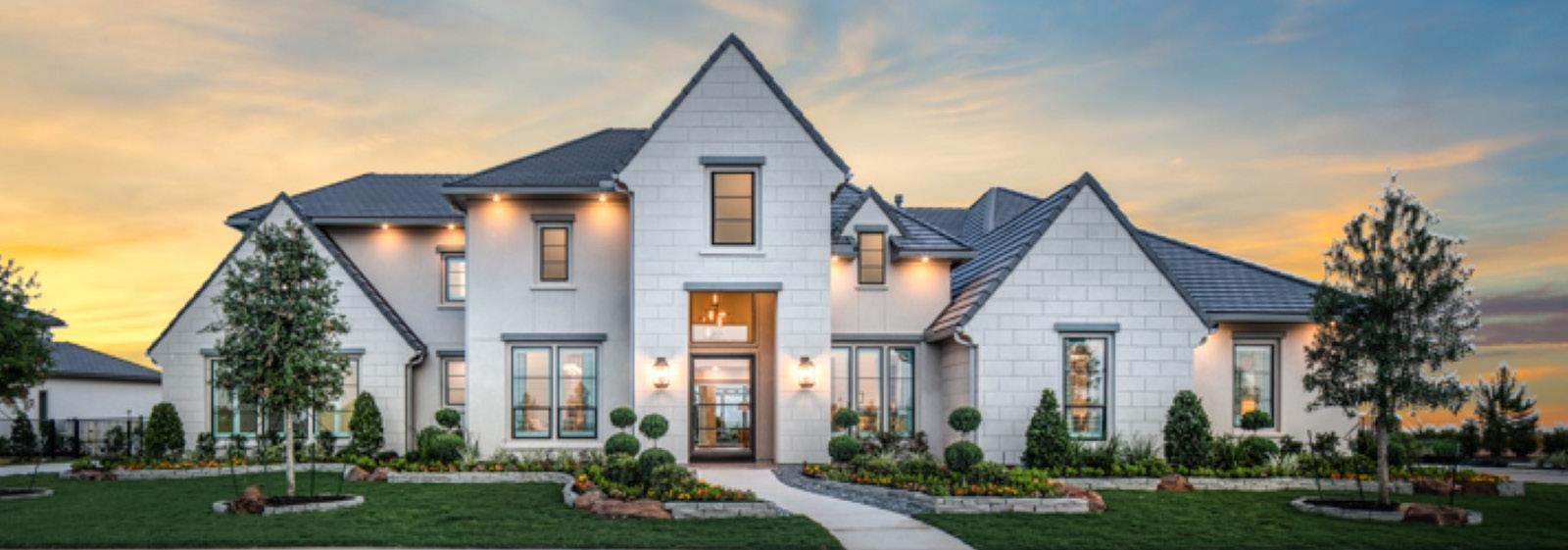
Photos
by:Steve Chenn Designer website: https://aisdesignsco.com
This project began as a bungalow, a major two-story addition was envisioned. However during demolition the basement walls caved in due to excess rain. A city “Stop Work” order was issued. The new plan was to rebuild in the same location using the same plan, only this time a variance and grading plan, and city approvals from planning commission were required. A Renaissance: yes! ....... A custom home: absolutely!
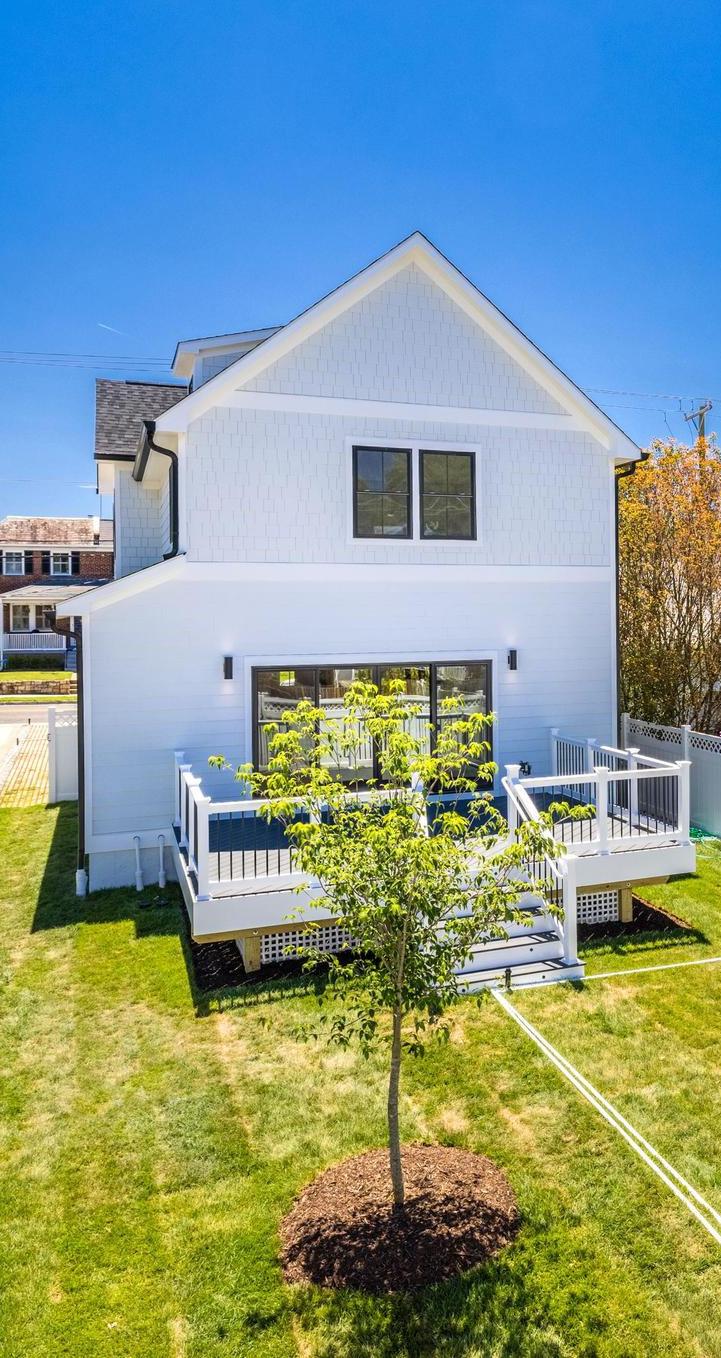
http://www.gavernicholsarchitect.com


